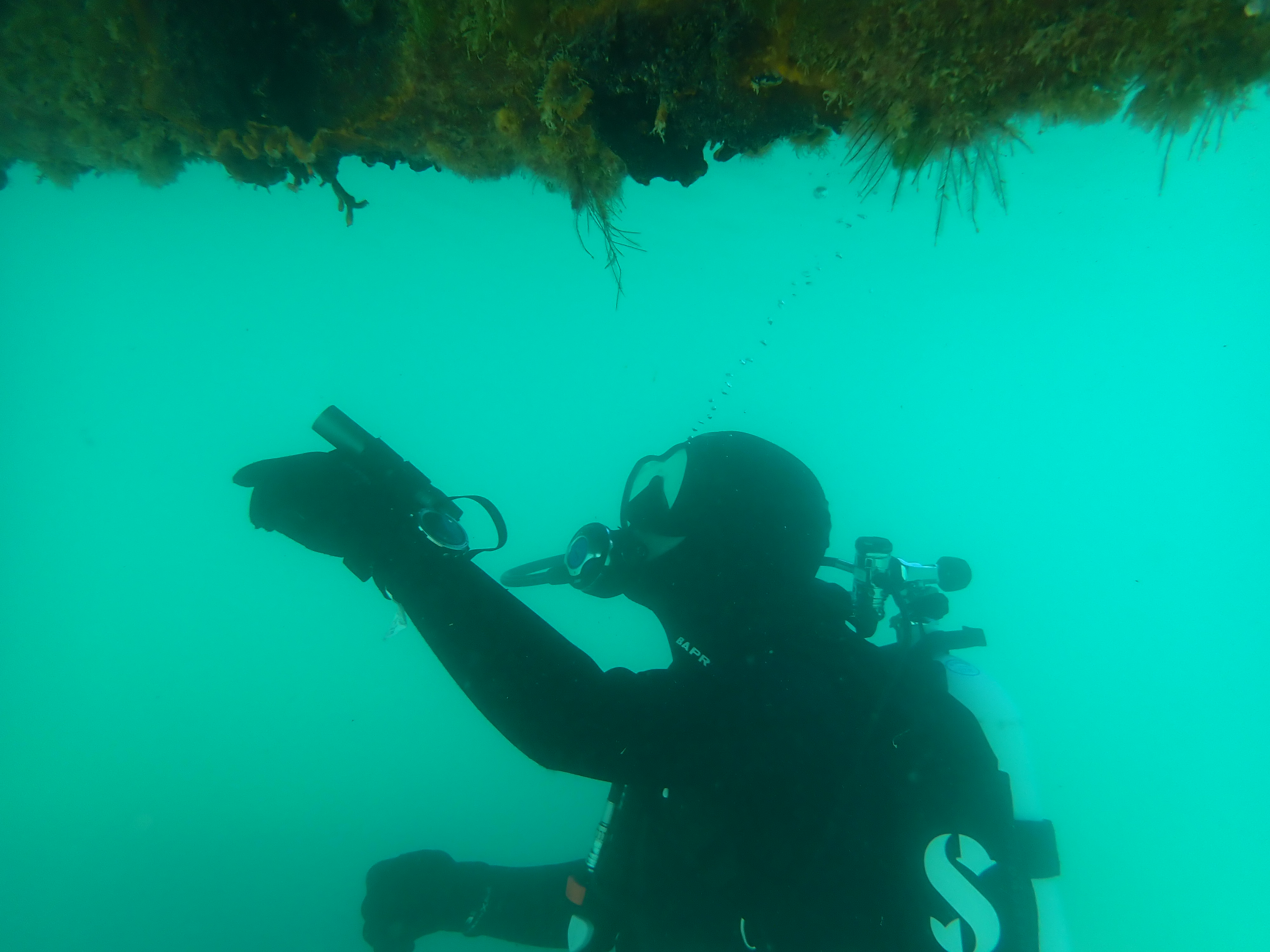Hull checks to resume soon
24 Oct 2025, 12:55 PM
Divers are about to begin checking more than 2000 boat hulls around Te Taitokerau as the Northland Regional Council (NRC) begins its annual summer hunt for unwanted marine pests.
Kaeden Leonard, the council’s Biosecurity Manager – Marine, says a combination of contractors and NRC scientific divers will check hulls right around the region.
The annual programme typically runs from November to May and will see both local and visiting vessels targeted, from small recreational vessels to large commercial vessels.
“Summer is the peak boat movement period in Northland, and this work is part of an ongoing search targeting unwanted pests threatening the region’s marine environment.”
Mr Leonard says last summer (2024–2025), Northland Regional Council’s marine biosecurity team inspected 2310 vessel hulls across 14 locations.
“While the majority of vessel owners showed strong compliance with biofouling rules when relocating between harbours, unfortunately, a number of vessels were still found carrying listed marine pests including Sabella spallanzanii (Mediterranean fanworm) in areas where those species are not known to be present.”
“Our team works closely with these vessel owners to ensure risks are mitigated quickly,” Mr Leonard says. “This often means hauling the vessel out of the water for cleaning at the owner’s expense.”
Mr Leonard says the regional council remains very appreciative of the steps so many boaties are already taking to keep their boat hulls clean and similarly the great support it gets from Northland’s marina operators.
He says given there are some harbours in Northland that are free from Mediterranean fanworm (including Tutukākā and Mangōnui Harbours) – and active removal is underway in others, including Mangawhai Harbour – it is especially important for vessel owners to be vigilant about keeping their hulls clean.
“This is particularly the case when leaving areas where Mediterranean fanworm is well-established, including Whangārei, Whangaroa and Ōpua."
The hull surveys begin as authorities celebrate successful work to eliminate Mediterranean fanworm from Mangōnui Harbour, which has been achieved with co-funding assistance from Biosecurity New Zealand.
Mr Leonard says five years ago a vessel was found there that was heavily infested with fanworm. A small number of individual fanworms were also located and removed from the seafloor under the vessel.
The council has worked with Biosecurity New Zealand – which funded 50 percent of ongoing surveillance of the harbour over the past five years – and according to best-practice guidelines, it’s now possible to say the pest has been eliminated there.
Mr Leonard says as well as rules covering transportation of marine pests, council has rules limiting the amount of ‘biofouling’ (build-up of microorganisms, algae, plants and pests) vessels can be carrying when they enter new spots.
He says before relocating to another area, a vessel must only have light fouling’ meaning no more than small patches (up to 100mm in diameter) of visible fouling, totalling less than five percent of the hull and ‘niche’ areas like the base of the keel, and inside intakes and bow thrusters. A slime layer and/or barnacles are ok.
“Vessel hulls are the most common way for marine pests to hitch a ride, and our Marine Pathway Management Plan (MPMP) aims to manage this issue.”
Under the plan, any vessel entering Northland waters or moving from one harbour to another must have no more than ‘light fouling’, defined as a slime layer and/or barnacles and a few patches of macrofouling.
“Marine pests can hitchhike and hide amongst boat fouling, so preventing the movement of infested vessels is the best way to stop the spread of marine invaders,” Mr Leonard says.
Mr Leonard says it’s always worth bearing in mind that marine pests found on vessels have often been concealed in niche areas. “These areas require special attention when applying antifouling or during a ‘lift and wash’ period and we strongly recommend double-checking these niche areas before your vessel goes back in the water.”
“Another thing to remember is that there are designated areas in which you can clean your vessel hull, and hulls may only be cleaned in the water if they have light fouling or barnacles.”
He says people illegally cleaning hulls can be fined $750 and any vessel that requires scrubbing should be removed by a lift and wash. View designated areas for in-water cleaning
“If a marine pest is found on your vessel hull, please contact Northland Regional Council immediately on (0800) 002 004.
Mr Leonard says authorities are keen to ensure vessels are free of marine pests before owners start travelling to new areas with the onset of warmer summer weather.
“Vessel owners are asked to be extra vigilant and clean anchors and topside equipment like cray pots and ropes when moving to new areas, especially after visiting known infected areas.”
Meanwhile, among a range of unwanted marine nasties the NRC divers will be checking for on vessel hulls, other artificial structures and the seafloor are a number already known to be in New Zealand.
These include exotic Caulerpa seaweed, Mediterranean fanworm (Sabella spallanzanii), Asian date mussel (Arcuatula senhousia), Australian droplet tunicate (Eudistoma elongatum), clubbed tunicate (Styela clava) and little bottles sea squirt (Clavelina oblonga).
Other unwanted species not known to be here yet, but which divers will also be vigilant for, include northern Pacific seastar (Asterias amurensis), European green crab (Carcinus maenas), Chinese mitten crab (Eriocheir sinensis) and Asian clam (Potamocorbula amurensis).
Boat owners keen to know if their boat has been inspected – and the results – are welcome to email marinebiosecurity@nrc.govt.nz
“Email your vessel name and mooring/berth location and if yours is one of the 2000-plus hulls inspected in the survey you’ll be notified.”

A file shot of a Northland Regional Council diver checking a vessel hull in Northland.
